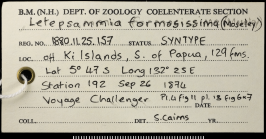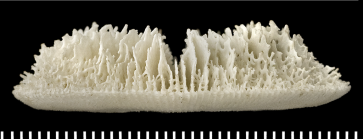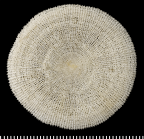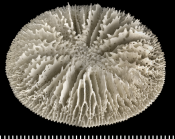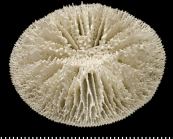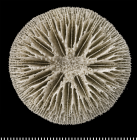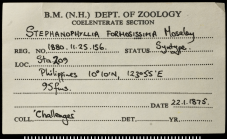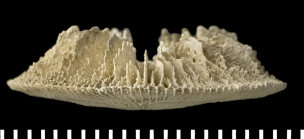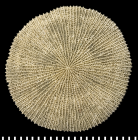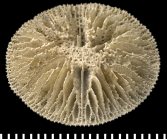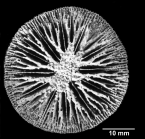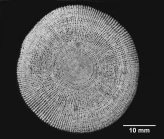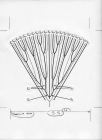WoRMS taxon details
Letepsammia Yabe & Eguchi, 1932
267550 (urn:lsid:marinespecies.org:taxname:267550)
accepted
Genus
Stephanophyllia formosissima Moseley, 1876 accepted as Letepsammia formosissima (Moseley, 1876) (type by original designation)
Stephanophyllia (Letepsammia) Yabe & Eguchi, 1932 · unaccepted > superseded combination (basionym)
- Species Letepsammia acuta Kitahara & Cairns, 2021
- Species Letepsammia fissilis Cairns, 1995
- Species Letepsammia formosissima (Moseley, 1876)
- Species Letepsammia franki Owens, 1994
- Species Letepsammia superstes (Ortmann, 1888)
- Species Letepsammia japonica (Yabe & Eguchi, 1934) accepted as Letepsammia superstes (Ortmann, 1888) (unaccepted > junior subjective synonym)
marine, fresh, terrestrial
recent + fossil
(of Stephanophyllia (Letepsammia) Yabe & Eguchi, 1932) Yabe H, Eguchi M. (1932). Deep-water corals from the Riukiu limestone of Kikai-Jima, Riukiu Islands. <em>Proceedings of the Imperial Academy of Japan.</em> 8: 442-445. [details]
Status Originally described as a subgenus of Stephanophyllia. Type species well described by Cairns (1989).
Depth range 50-710 m
Fossil range Pliocene to Recent
Status Originally described as a subgenus of Stephanophyllia. Type species well described by Cairns (1989). [details]
Depth range 50-710 m
Depth range 50-710 m [details]
Fossil range Pliocene to Recent
Fossil range Pliocene to Recent [details]
Hoeksema, B. W.; Cairns, S. (2024). World List of Scleractinia. Letepsammia Yabe & Eguchi, 1932. Accessed through: World Register of Marine Species at: https://www.marinespecies.org/aphia.php?p=taxdetails&id=267550 on 2024-04-19
Date
action
by
![]() The webpage text is licensed under a Creative Commons Attribution 4.0 License
The webpage text is licensed under a Creative Commons Attribution 4.0 License
original description
(of Stephanophyllia (Letepsammia) Yabe & Eguchi, 1932) Yabe H, Eguchi M. (1932). Deep-water corals from the Riukiu limestone of Kikai-Jima, Riukiu Islands. <em>Proceedings of the Imperial Academy of Japan.</em> 8: 442-445. [details]
context source (Hexacorallia) Fautin, Daphne G. (2013). Hexacorallians of the World. (look up in IMIS) [details]
basis of record van der Land, J. (ed). (2008). UNESCO-IOC Register of Marine Organisms (URMO). , available online at http://www.marinespecies.org/urmo/ [details]
additional source Cairns, S.D., R. Baron-Szabo, A.F. Budd, B. Lathuilière, E. Roniewicz, J. Stolarski & K.G. Johnson. (2010). Corallosphere. , available online at http://www.corallosphere.org [details]
additional source Baron-Szabo, R.C. & S.D. Cairns. (2017). Part F, Revised, Volume 2, Chapter 11: Systematic descriptions of the Scleractinia Family Micrabaciidae. <em>Treatise Online, Paleontological Institute, University of Kansas, USA.</em> 98: 1-8., available online at https://doi.org/10.17161/to.v0i0.6671 [details] Available for editors [request]
[request]
redescription Cairns, S.D. (1989). A revision of the ahermatypic Scleractinia of the Philippine Islands and adjacent waters, Part 1: Fungiacyathidae, Micrabaciidae, Turbinoliinae, Guyniidae, and Flabellidae. <em>Smithsonian Contributions to Zoology.</em> 486: 1-136. [details] Available for editors [request]
[request]
new combination reference Vaughan TW, Wells JW. (1943). Revision of the suborders, families and genera of the Scleractinia. <em>Special Papers of the Geological Society of America.</em> 44: 1-363. [details]
new combination reference Owens JM. (1986). On the elevation of Stephanophyllia subgenus Letepsammia to generic rank (Coelenterata: Scleractinia: Micrabaciidae). <em>Proceedings of the Biological Society of Washington.</em> 99 (3): 486-488. [details]
status source Squires DF, Keyes IW. (1967). The marine fauna of New Zealand: Scleractinian corals. <em>New Zealand Department of Scientiic and Industrial Research Bulletin.</em> 185: 1-46, pls. 1-6. [details]
context source (Hexacorallia) Fautin, Daphne G. (2013). Hexacorallians of the World. (look up in IMIS) [details]
basis of record van der Land, J. (ed). (2008). UNESCO-IOC Register of Marine Organisms (URMO). , available online at http://www.marinespecies.org/urmo/ [details]
additional source Cairns, S.D., R. Baron-Szabo, A.F. Budd, B. Lathuilière, E. Roniewicz, J. Stolarski & K.G. Johnson. (2010). Corallosphere. , available online at http://www.corallosphere.org [details]
additional source Baron-Szabo, R.C. & S.D. Cairns. (2017). Part F, Revised, Volume 2, Chapter 11: Systematic descriptions of the Scleractinia Family Micrabaciidae. <em>Treatise Online, Paleontological Institute, University of Kansas, USA.</em> 98: 1-8., available online at https://doi.org/10.17161/to.v0i0.6671 [details] Available for editors
redescription Cairns, S.D. (1989). A revision of the ahermatypic Scleractinia of the Philippine Islands and adjacent waters, Part 1: Fungiacyathidae, Micrabaciidae, Turbinoliinae, Guyniidae, and Flabellidae. <em>Smithsonian Contributions to Zoology.</em> 486: 1-136. [details] Available for editors
new combination reference Vaughan TW, Wells JW. (1943). Revision of the suborders, families and genera of the Scleractinia. <em>Special Papers of the Geological Society of America.</em> 44: 1-363. [details]
new combination reference Owens JM. (1986). On the elevation of Stephanophyllia subgenus Letepsammia to generic rank (Coelenterata: Scleractinia: Micrabaciidae). <em>Proceedings of the Biological Society of Washington.</em> 99 (3): 486-488. [details]
status source Squires DF, Keyes IW. (1967). The marine fauna of New Zealand: Scleractinian corals. <em>New Zealand Department of Scientiic and Industrial Research Bulletin.</em> 185: 1-46, pls. 1-6. [details]
 Present
Present  Inaccurate
Inaccurate  Introduced: alien
Introduced: alien  Containing type locality
Containing type locality
From editor or global species database
Comparison Differs from Stephanophyllia in having more perforate septa, more complex septal dentition, a thinner base, and larger marginal shelf. [details]Diagnosis Corallum porous but sturdy; costae consist of thin, delicate ridges; marginal shelf present; septa lamellar and highly porous, with complex dentition; small, simple synapticulae present; columella spongy. [details]
Remark The genus was partially revised by Cairns (1989). There are four valid species, one having a fossil record [details]
Status Originally described as a subgenus of Stephanophyllia. Type species well described by Cairns (1989). [details]
From other sources
Biology azooxanthellate [details]Depth range 50-710 m [details]
Fossil range Pliocene to Recent [details]
